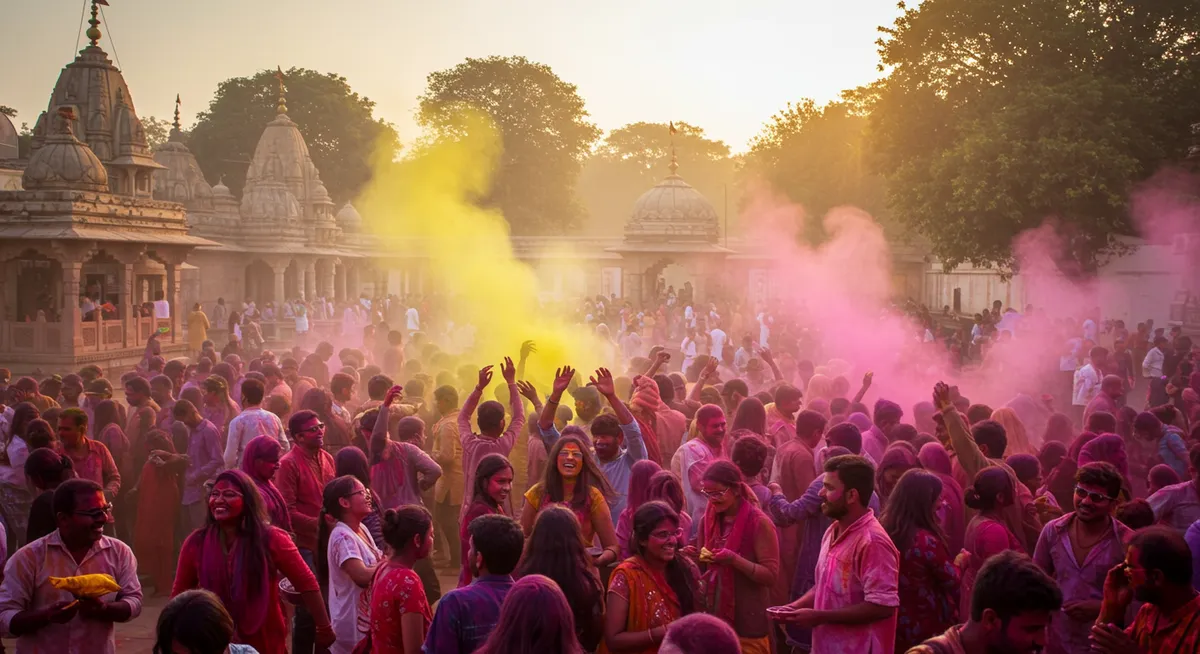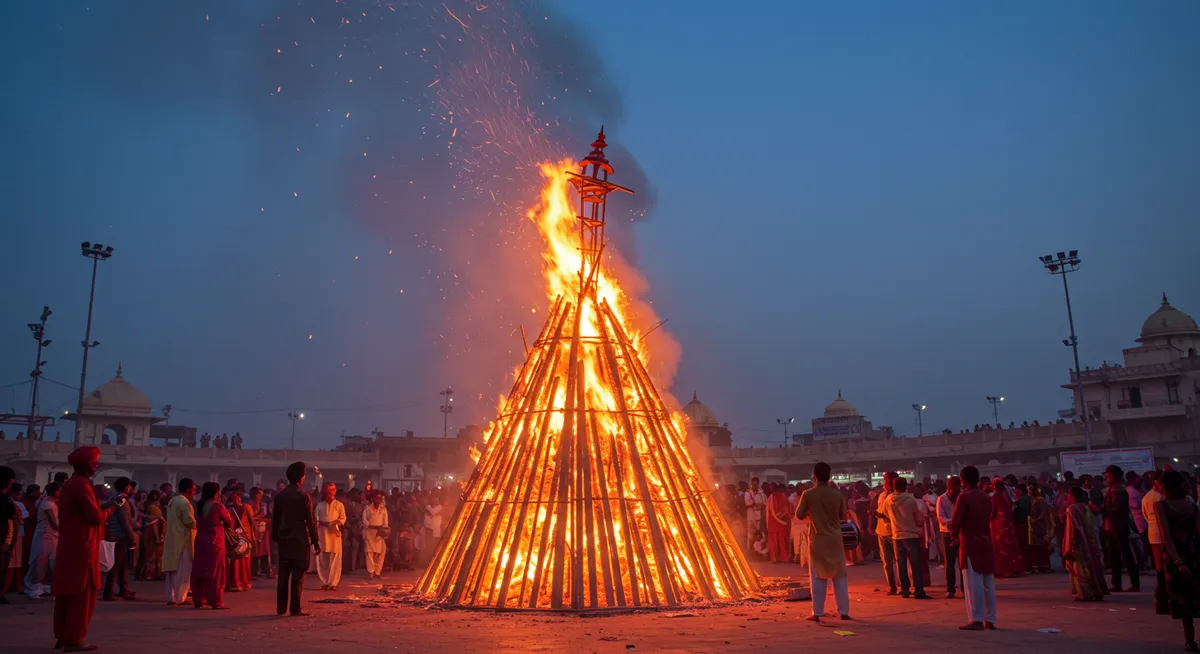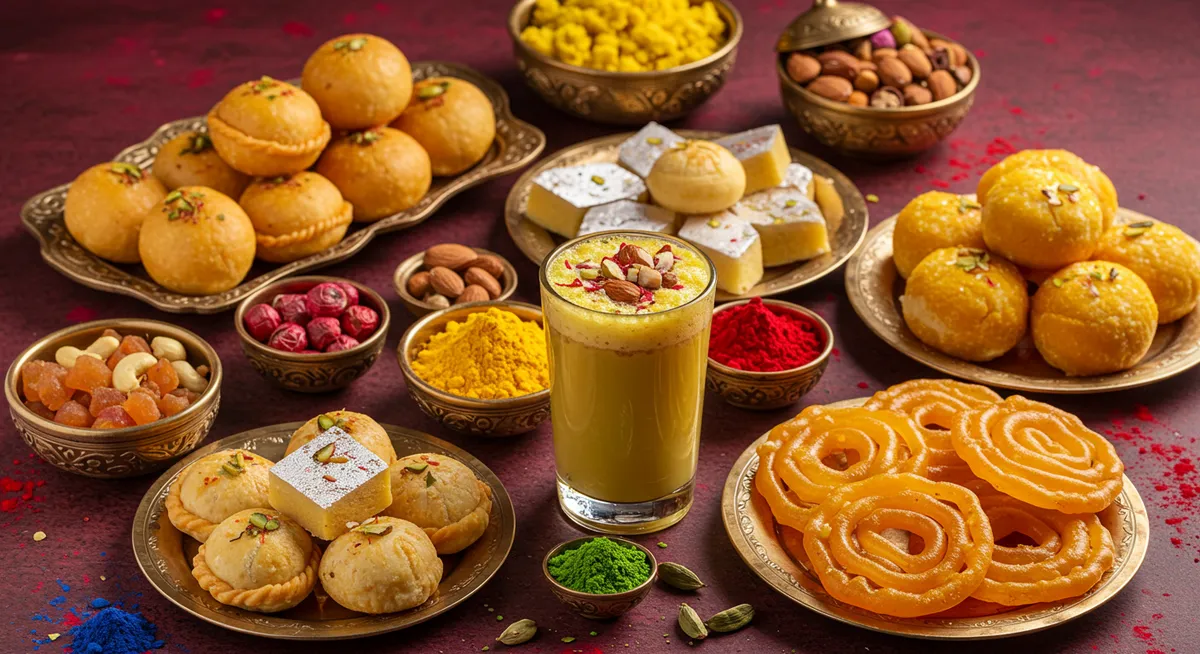Holi Festival Guide | India's Vibrant Celebration of Colors

Holi: India's Magnificent Festival of Colors
Few cultural celebrations around the world can match the visual spectacle and joyful exuberance of India's Holi festival. Each spring, this ancient Hindu tradition transforms communities across the Indian subcontinent into kaleidoscopes of color as people take to the streets to playfully douse each other with vibrant powdered colors and water. Beyond its famous color play, Holi represents profound cultural significance as a celebration of spring's arrival, the triumph of good over evil, and the dissolution of social boundaries. This guide explores the essential aspects of Holi, providing travelers with cultural context and practical information for an authentic festival experience.

The Cultural Significance of Holi
Holi's rich cultural foundations draw from multiple elements of Hindu tradition:
- Mythological Roots: The festival commemorates several Hindu legends, most prominently the story of Prahlad and Holika, representing the victory of devotion over evil
- Seasonal Celebration: As a spring festival, Holi marks the end of winter and celebrates the upcoming harvest season
- Social Equalizer: During Holi, traditional social hierarchies based on caste, gender, age, and status temporarily dissolve
- Communal Harmony: The festival promotes unity, forgiveness, and the renewal of relationships
Key Holi Experiences
Holi celebrations feature several distinctive elements that vary across regions:
Holika Dahan: The Bonfire Ritual
The evening before the main color celebration, communities gather for an important ceremonial bonfire:
- Symbolic Meaning: The fire represents the burning of the demoness Holika and the triumph of good over evil
- Community Gathering: Families and neighbors collect wood for days before the celebration
- Ritual Practices: People circle the bonfire, offer grains and coconuts, and perform prayers for prosperity
- Traditional Foods: Special Holi delicacies are shared among community members

Rangwali Holi: The Color Play
The main event of Holi involves the famous application of colors that has captured global imagination:
- Colored Powders: Traditional natural pigments (gulal) and modern synthetic colors are both used
- Water Play: From water guns (pichkaris) to water balloons, liquid adds another dimension to the color celebrations
- Musical Traditions: Folk songs, drums, and dancing are integral to the festivities
- Community Processions: Many places feature organized parades through streets and neighborhoods
Regional Variations
Holi takes on distinctive forms across different parts of India:
- Mathura and Vrindavan: Traditional celebrations in Lord Krishna's birthplace last for over a week
- Barsana's Lathmar Holi: Women playfully beat men with sticks in this unique tradition
- Manipur's Yaosang: A six-day celebration incorporating indigenous Manipuri traditions
- Anandpur Sahib's Hola Mohalla: Sikh martial arts displays coincide with Holi celebrations
Planning Your Holi Experience
Creating a memorable Holi experience requires thoughtful planning:
Timing and Location
Choosing when and where to experience Holi greatly impacts your festival experience:
- Festival Date: Holi falls on the full moon day (Purnima) in the Hindu month of Phalguna, typically in March
- Duration: While the main celebration is one day, associated festivities can extend from 2-10 days depending on the region
- Traditional Locations: Mathura, Vrindavan, Barsana, and Nandgaon offer the most authentic historical celebrations
- Urban Experiences: Delhi, Jaipur, and Mumbai host large-scale events that can be more accessible for visitors
Practical Considerations
Preparing properly for Holi enhances both enjoyment and safety:
- Clothing: Wear old, white clothes you don't mind getting permanently stained
- Skin Protection: Apply oil to skin and hair before participating to make color removal easier
- Photography: Use waterproof camera protection if documenting the celebration
- Accommodation: Book well in advance as Holi is a major travel period in India
- Consent Awareness: Join celebrations in organized settings where behavior is monitored

Cultural Context for Visitors
Understanding Holi's deeper cultural dimensions enhances appreciation and promotes respectful participation:
- Religious Significance: While playful, Holi remains an important Hindu religious observance
- Social Meaning: The temporary breaking of social barriers reflects Hindu philosophical concepts about the illusory nature of differences
- Family Tradition: For most Indians, Holi is primarily a family and community celebration
- Environmental Awareness: A growing movement promotes eco-friendly natural colors instead of synthetic dyes
Festival Foods and Traditions
Holi's culinary traditions are an essential part of the celebration:
- Gujiya: Sweet dumplings filled with khoya (milk solids), nuts, and dried fruits
- Thandai: A cooling spiced milk drink sometimes prepared with bhang (cannabis)
- Papri Chaat: Savory snack of crisp fried dough wafers with potatoes, yogurt and chutneys
- Malpua: Sweet pancakes soaked in sugar syrup
Experience India's Most Colorful Tradition
Holi offers travelers a rare opportunity to participate in one of the world's most visually stunning and culturally significant celebrations. The festival provides a window into core aspects of Indian cultural values—the importance of seasonal transitions, the victory of good over evil, the temporary dissolution of social boundaries, and the central role of community celebration in Indian life.
By approaching Holi with respect for its cultural significance while embracing its spirit of joy and playfulness, visitors can experience one of the most memorable and transformative cultural celebrations available anywhere in the world.
Ready to experience Holi in India?
Start planning your colorful adventure with our practical travel tips and insider guides to the most authentic celebration locations.
Check back soon for our upcoming detailed guides to regional Holi variations, eco-friendly color options, and traditional Holi recipes.
Explore More Asian Festivals
Holi is just one of many extraordinary cultural celebrations across Asia. Discover more incredible festivals in the region:
Continue your exploration of Asian festival culture by returning to our Asian Festivals Guide, where you can discover other vibrant celebrations from Japan's Cherry Blossom Festival to Thailand's Songkran.
← Back to Asian Festivals